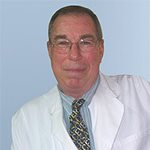אילו חולים אלו בחרו בטיפולים אלטרנטיבים בלבד?
דיון מתוך פורום טיפולים משלימים בסרטן
במקום רדיותרפיה, מה היה אחוז הריפוי הצפוי? Source: American Society for Therapeutic Radiology AND Oncology Date: January 8, 2007 Radiation Therapy Combo Cures Prostate Cancer Long-term Science Daily Seventy-four percent of men treated with a combination of radiation seed implants AND external beam radiation therapy for prostate cancer are cured of their disease 15 years following their treatment, according to a study released today in the International Journal of Radiation Oncology*Biology*Physics, the official journal of ASTRO. -------------------------------------------------------------------------------- This study was conducted by the physicians at the Seattle Prostate Institute. Doctors wanted to look at the combination of seed implants AND external beam radiation therapy, two different types of radiation therapy, to prolong the long-term disease cure rates for prostate cancer. Over the course of 15 years, doctors followed 232 men with early-stage prostate cancer who received a course of external beam radiation therapy followed by permanent seed implants a few weeks later. Sixty-five percent of these patients had T2b-T3 disease AND the entire group had an average pre-treatment PSA of 15 ng/ml. Seed implants, also called brachytherapy, are small radioactive pellets, each about the size of a grain of rice. The seeds are inserted into the prostate through small needles during a brief outpatient procedure. External beam radiation therapy involves a series of 25 short daily outpatient treatments, where a radiation oncologist precisely directs high energy radiation beams to kill cancer cells. "This study is exciting because it shows that the combination of brachytherapy AND external beam therapy are successful long-term at curing men of their prostate cancer," said John E. Sylvester, M.D., lead author of the study AND the Director of the Seattle Prostate Institute in Seattle. "This is good news for men with prostate cancer since radiation therapy is less invasive, spares healthy tissue AND helps patients return to regular activities sooner than surgery." This study was conducted by the physicians at the Seattle Prostate Institute. Doctors wanted to look at the combination of seed implants AND external beam radiation therapy, two different types of radiation therapy, to prolong the long-term disease cure rates for prostate cancer. Over the course of 15 years, doctors followed 232 men with early-stage prostate cancer who received a course of external beam radiation therapy followed by permanent seed implants a few weeks later. Sixty-five percent of these patients had T2b-T3 disease AND the entire group had an average pre-treatment PSA of 15 ng/ml. Seed implants, also called brachytherapy, are small radioactive pellets, each about the size of a grain of rice. The seeds are inserted into the prostate through small needles during a brief outpatient procedure. External beam radiation therapy involves a series of 25 short daily outpatient treatments, where a radiation oncologist precisely directs high energy radiation beams to kill cancer cells. "This study is exciting because it shows that the combination of brachytherapy AND external beam therapy are successful long-term at curing men of their prostate cancer," said John E. Sylvester, M.D., lead author of the study AND the Director of the Seattle Prostate Institute in Seattle. "This is good news for men with prostate cancer since radiation therapy is less invasive, spares healthy tissue AND helps patients return to regular activities sooner than surgery."
אפשר לחיות עם סרטן פרוסטטה גם שלושים שנה, זהלא סרטן שמתים ממנו כל כך מהר, בניגוד לסוגי סרטן אחרים.
ברכיתרפיה זו לא רפואה משלימה אלא חלק מהרדיותרפיה הקונבציונלית. פשוט שיטה אחרת להקרין לא ממכשיר הקרנה מבחוץ אלא על ידי החדרת חומר רדיואקטיבי לתוך הערמונית. ד"ר יוסף ברנר
שאלתי אילו אותם חולים, שטופלו בברכיתרפיה והקרנה חיצונית ו 74% מהם שרדו ללא מחלה 15 שנה, היו מוותרים על טיפולים אלו ובוחרים רק בטיפולים אלטרנטיבים, מה להערתך היה אחוז הריפוי הצפוי? האם היית ממליץ לחולים בשלב זה של המחלה לוותר על הטיפולים הקונבנציונלים הנ"ל ולפנות רק לטיפולים אלטרנטיבים?

